Abstract
OBJECTIVE--The aim was to examine the long term morbidity experience of men exposed to 2,3,7,8-tetrachlorodibenzo-p-dioxin (TCDD). METHODS--A retrospective cohort morbidity study of 158 men first exposed to TCDD between 17 November 1953 and 16 November 1954 subdivided by chloracne state and back calculated TCDD blood lipid concentration, and 161 referents. Cause specific illness absence and admissions to hospital were examined between 1953 and 1989. RESULTS--On an ever or never basis, thyroid disease and appendicitis were diagnosed more often in the study group; these diseases were not differentially distributed by chloracne state, but were increased in the high TCDD subgroup. An 18% increase in total illness episodes was also seen (p = 0.002); illness rates increased with severity of chloracne and higher TCDD concentration within the chloracne subgroup. There were increases in infectious and parasitic diseases (primarily ill defined intestinal infections), disorders of the peripheral nervous system and sense organs, upper respiratory tract infections, and other skin diseases. Several of these increases correlated with chloracne state and infections disease episodes increased with higher TCDD concentration as well. Occurrences of mental disorders correlated with severity of chloracne, but not TCDD concentration. Benign and unspecified neoplasms were marginally increased in the severe chloracne and high TCDD subgroups. Chronic liver disease was marginally increased in the high TCDD subgroup. Findings relative to occurrence of ulcers, chronic lung disease, and kidney and metabolic disorders were unremarkable. DISCUSSION--For various conditions, increased illness episodes were seen among TCDD exposed employees compared with referents and were associated with either or both chloracne severity and back calculated TCDD concentration. The results are derived from insurance data; hence, it is possible that heightened awareness and personal health concerns led to greater utilisation of medical services in the exposed group. The findings based on TCDD concentration should be less subject to this potential bias.
Full text
PDF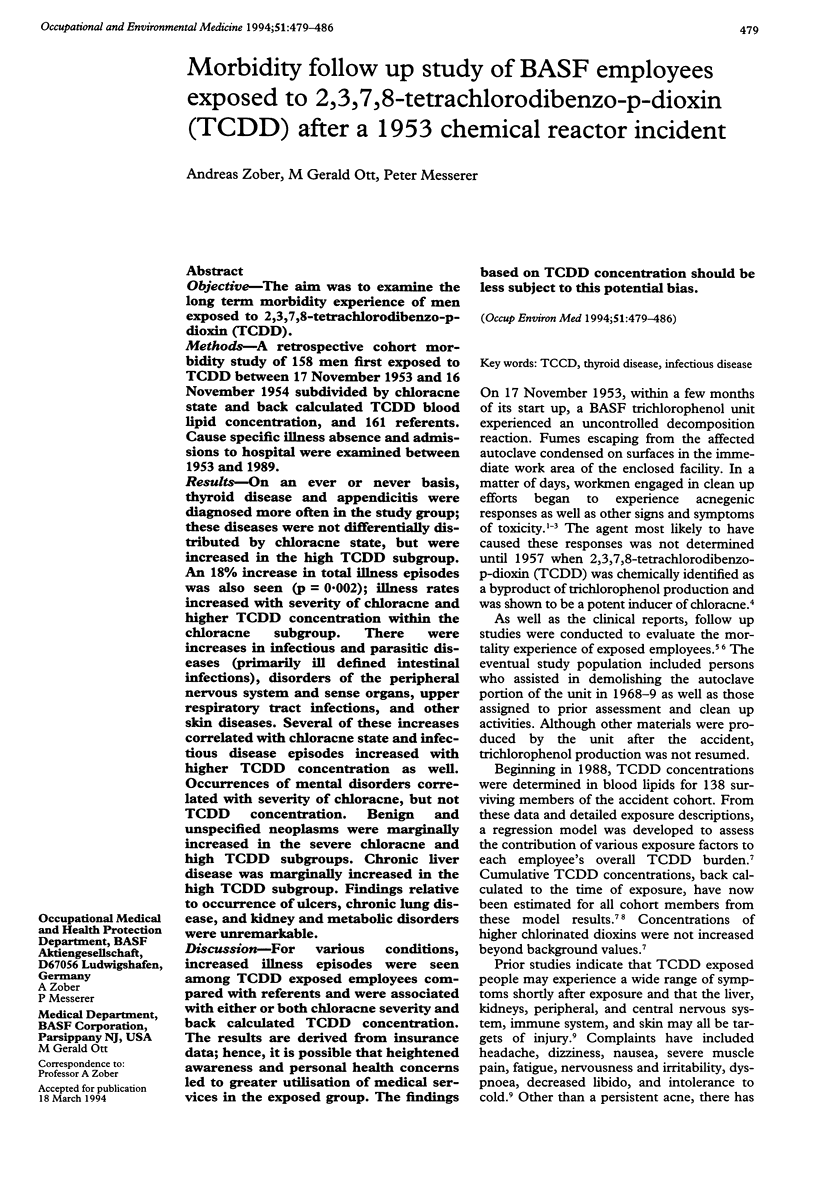
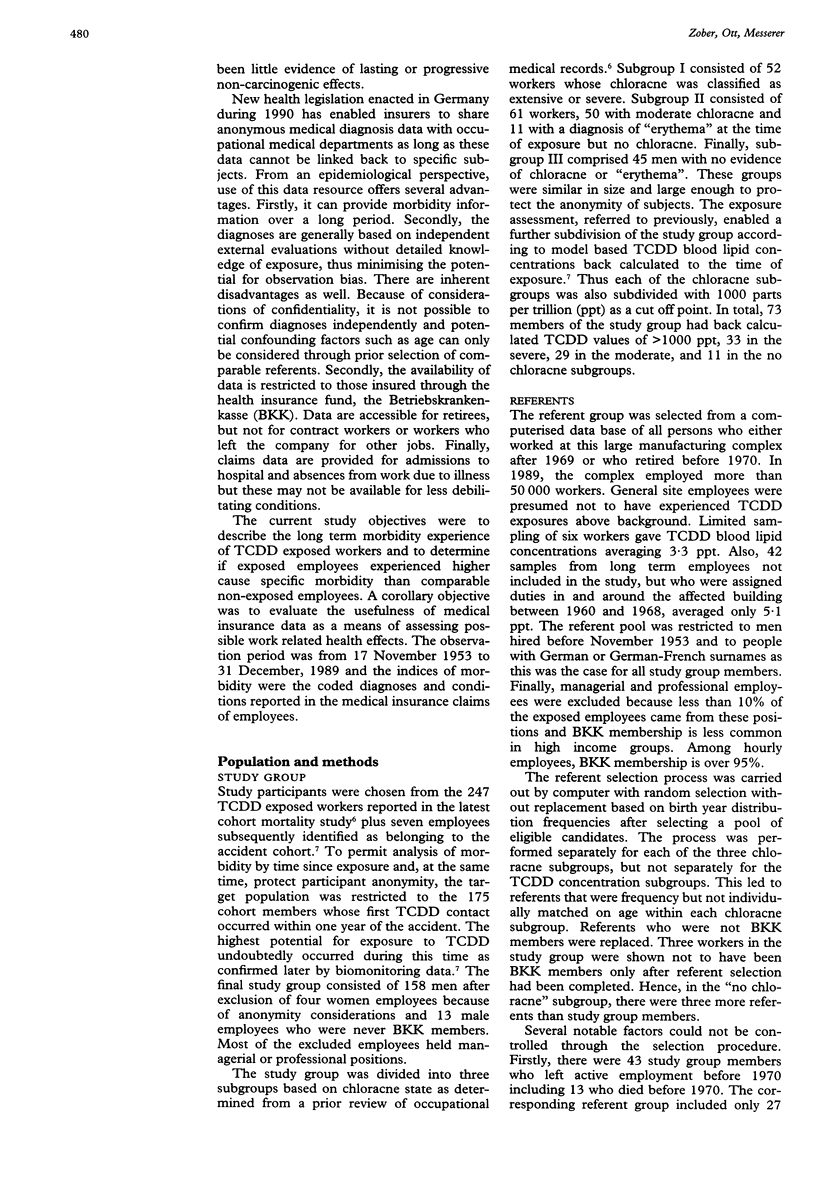
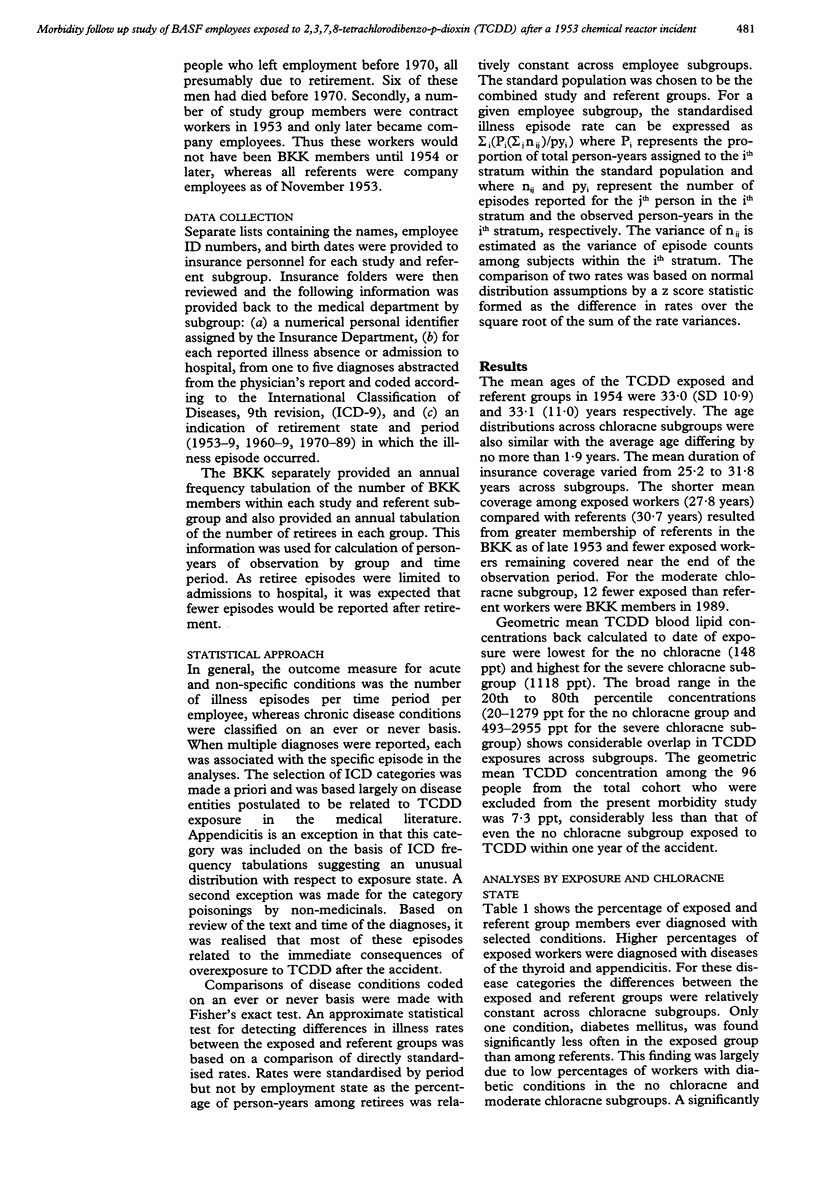
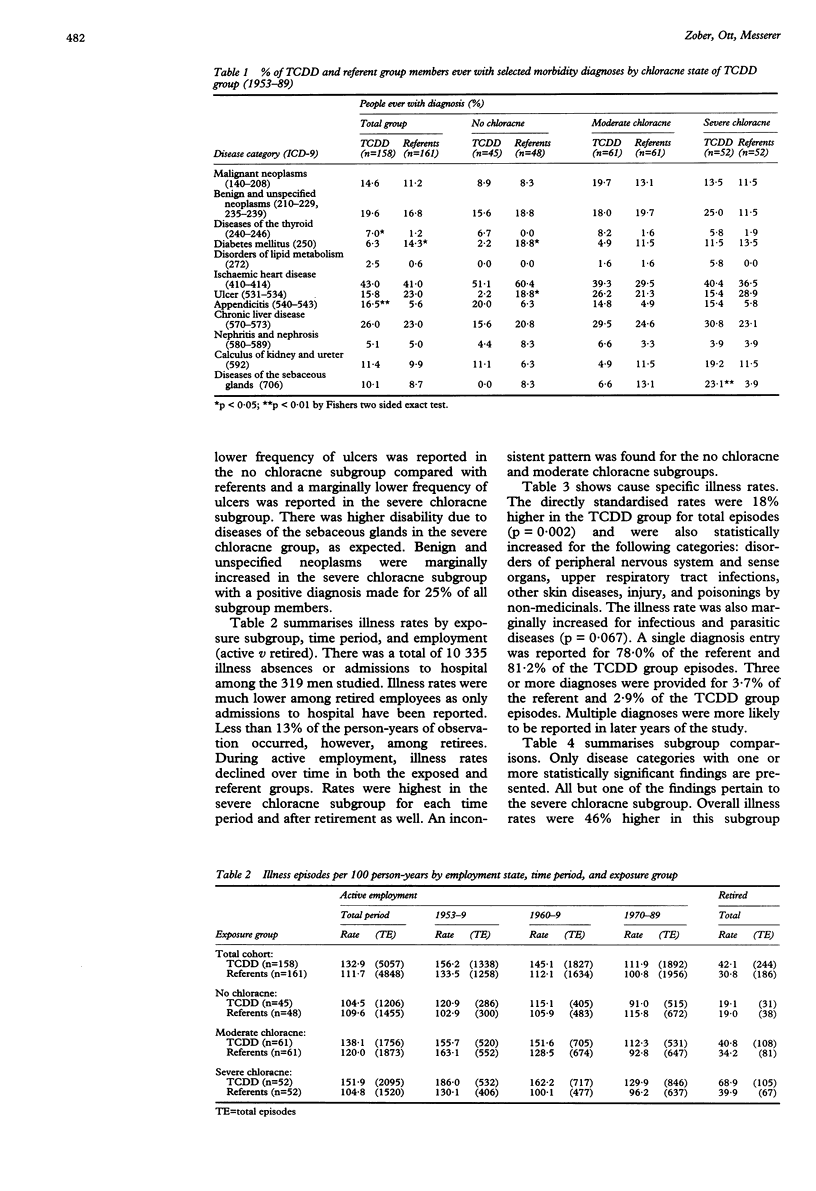
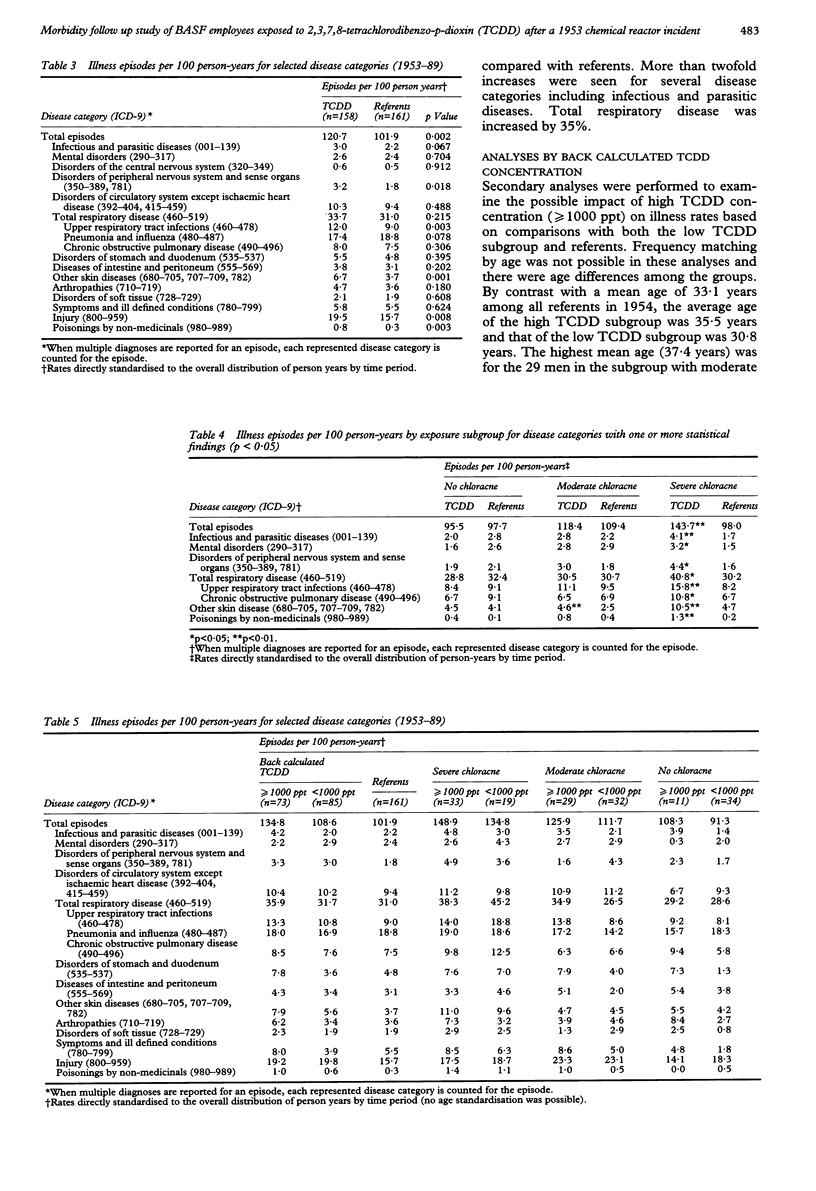
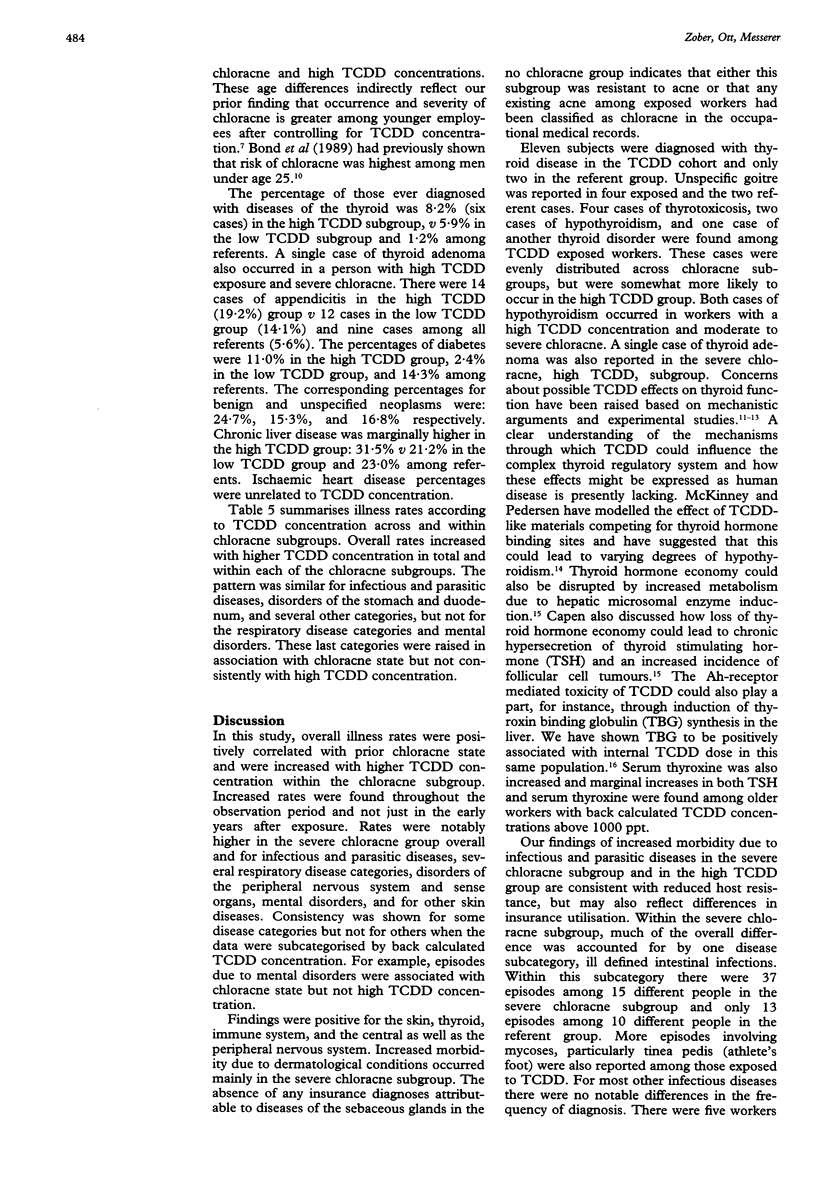
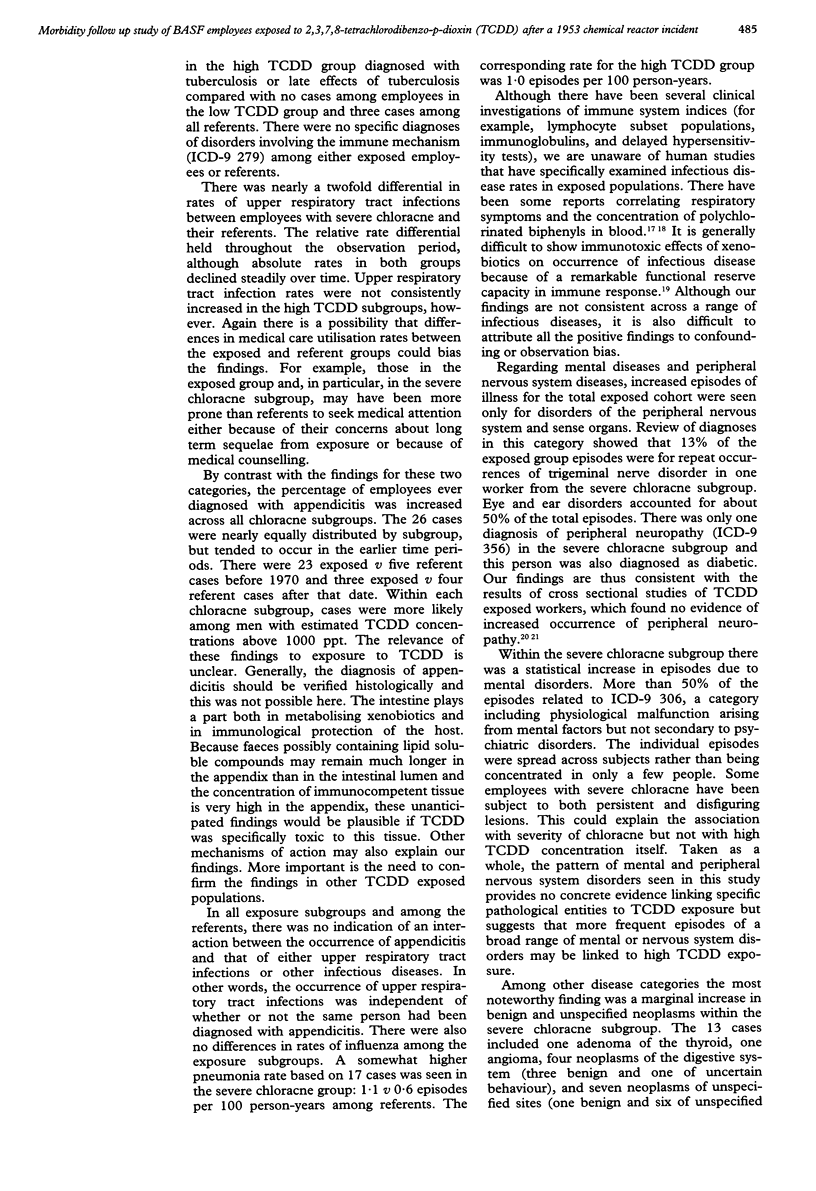
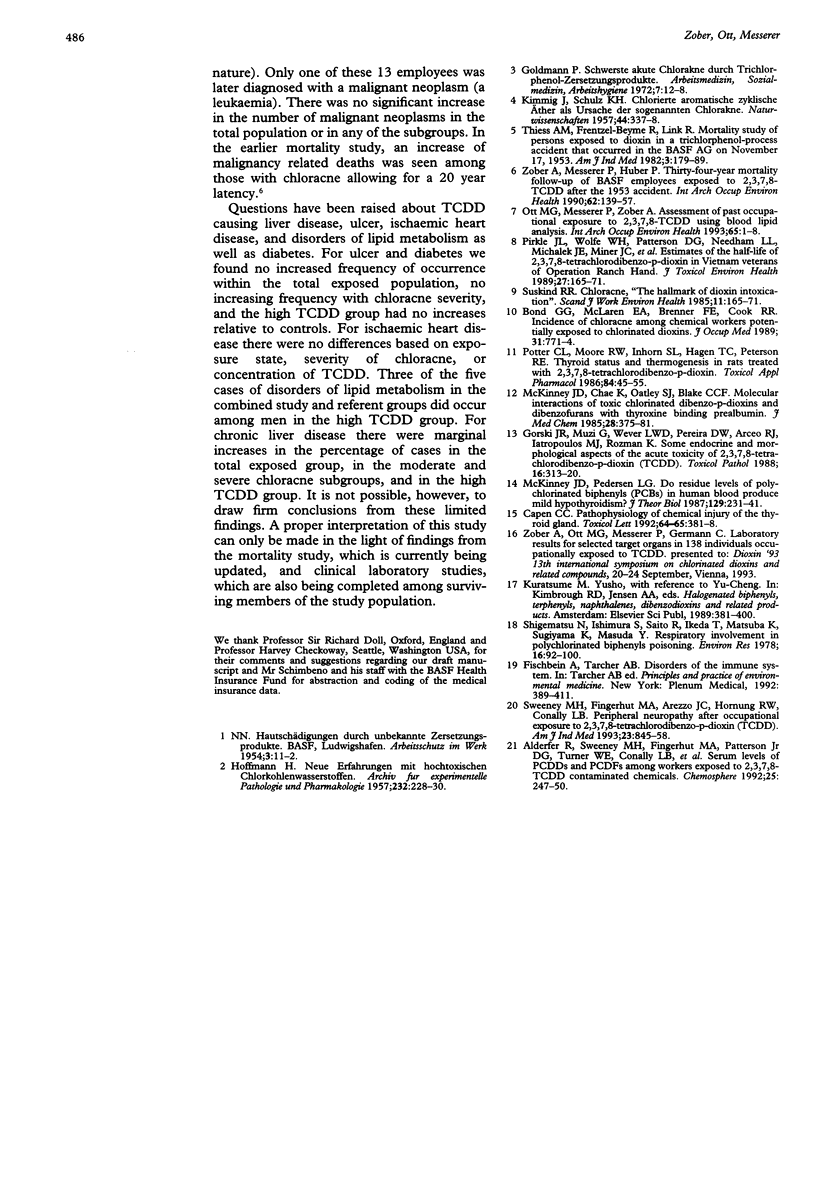
Selected References
These references are in PubMed. This may not be the complete list of references from this article.
- Bond G. G., McLaren E. A., Brenner F. E., Cook R. R. Incidence of chloracne among chemical workers potentially exposed to chlorinated dioxins. J Occup Med. 1989 Sep;31(9):771–774. doi: 10.1097/00043764-198909000-00017. [DOI] [PubMed] [Google Scholar]
- Capen C. C. Pathophysiology of chemical injury of the thyroid gland. Toxicol Lett. 1992 Dec;64-65 Spec No:381–388. doi: 10.1016/0378-4274(92)90211-2. [DOI] [PubMed] [Google Scholar]
- Gorski J. R., Muzi G., Weber L. W., Pereira D. W., Arceo R. J., Iatropoulos M. J., Rozman K. Some endocrine and morphological aspects of the acute toxicity of 2,3,7,8-tetrachlorodibenzo-p-dioxin (TCDD). Toxicol Pathol. 1988;16(3):313–320. doi: 10.1177/019262338801600301. [DOI] [PubMed] [Google Scholar]
- McKinney J. D., Chae K., Oatley S. J., Blake C. C. Molecular interactions of toxic chlorinated dibenzo-p-dioxins and dibenzofurans with thyroxine binding prealbumin. J Med Chem. 1985 Mar;28(3):375–381. doi: 10.1021/jm00381a018. [DOI] [PubMed] [Google Scholar]
- McKinney J. D., Pedersen L. G. Do residue levels of polychlorinated biphenyls (PCBs) in human blood produce mild hypothyroidism? J Theor Biol. 1987 Nov 21;129(2):231–241. doi: 10.1016/s0022-5193(87)80015-2. [DOI] [PubMed] [Google Scholar]
- Ott M. G., Messerer P., Zober A. Assessment of past occupational exposure to 2,3,7,8-tetrachlorodibenzo-p-dioxin using blood lipid analyses. Int Arch Occup Environ Health. 1993;65(1):1–8. doi: 10.1007/BF00586050. [DOI] [PubMed] [Google Scholar]
- Pirkle J. L., Wolfe W. H., Patterson D. G., Needham L. L., Michalek J. E., Miner J. C., Peterson M. R., Phillips D. L. Estimates of the half-life of 2,3,7,8-tetrachlorodibenzo-p-dioxin in Vietnam Veterans of Operation Ranch Hand. J Toxicol Environ Health. 1989;27(2):165–171. doi: 10.1080/15287398909531288. [DOI] [PubMed] [Google Scholar]
- Potter C. L., Moore R. W., Inhorn S. L., Hagen T. C., Peterson R. E. Thyroid status and thermogenesis in rats treated with 2,3,7,8-tetrachlorodibenzo-p-dioxin. Toxicol Appl Pharmacol. 1986 Jun 15;84(1):45–55. doi: 10.1016/0041-008x(86)90415-1. [DOI] [PubMed] [Google Scholar]
- Shigematsu N., Ishimaru S., Saito R., Ikeda T., Matsuba K., Sugiyama K., Masuda Y. Respiratory involvement in polychorinated biphenyls poisoning. Environ Res. 1978 Jul;16(1-3):92–100. doi: 10.1016/0013-9351(78)90146-9. [DOI] [PubMed] [Google Scholar]
- Suskind R. R. Chloracne, "the hallmark of dioxin intoxication". Scand J Work Environ Health. 1985 Jun;11(3 Spec No):165–171. doi: 10.5271/sjweh.2240. [DOI] [PubMed] [Google Scholar]
- Sweeney M. H., Fingerhut M. A., Arezzo J. C., Hornung R. W., Connally L. B. Peripheral neuropathy after occupational exposure to 2,3,7,8-tetrachlorodibenzo-p-dioxin (TCDD). Am J Ind Med. 1993 Jun;23(6):845–858. doi: 10.1002/ajim.4700230603. [DOI] [PubMed] [Google Scholar]
- Thiess A. M., Frentzel-Beyme R., Link R. Mortality study of persons exposed to dioxin in a trichlorophenol-process accident that occurred in the BASF AG on November 17, 1953. Am J Ind Med. 1982;3(2):179–189. doi: 10.1002/ajim.4700030209. [DOI] [PubMed] [Google Scholar]
- Zober A., Messerer P., Huber P. Thirty-four-year mortality follow-up of BASF employees exposed to 2,3,7,8-TCDD after the 1953 accident. Int Arch Occup Environ Health. 1990;62(2):139–157. doi: 10.1007/BF00383591. [DOI] [PubMed] [Google Scholar]


